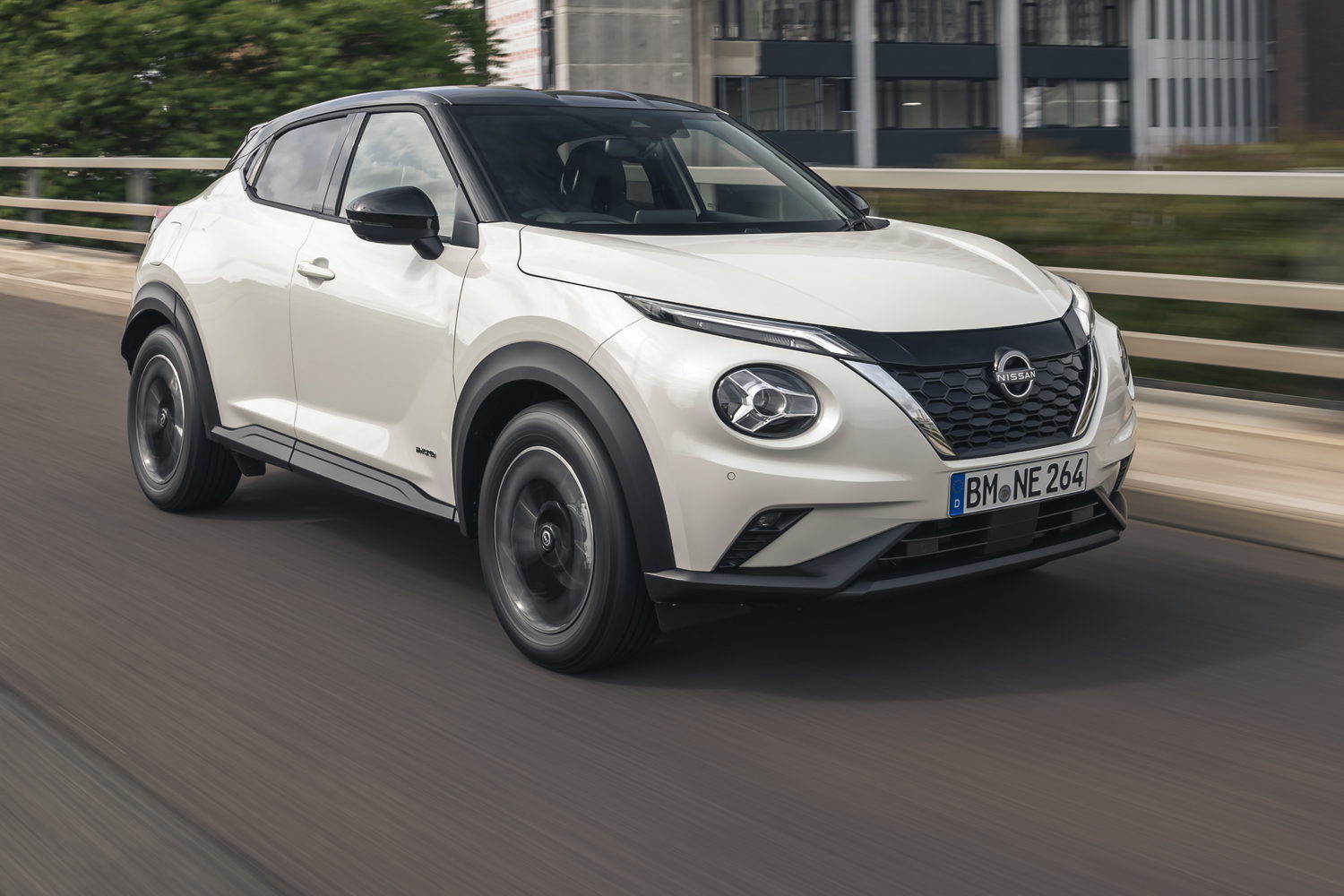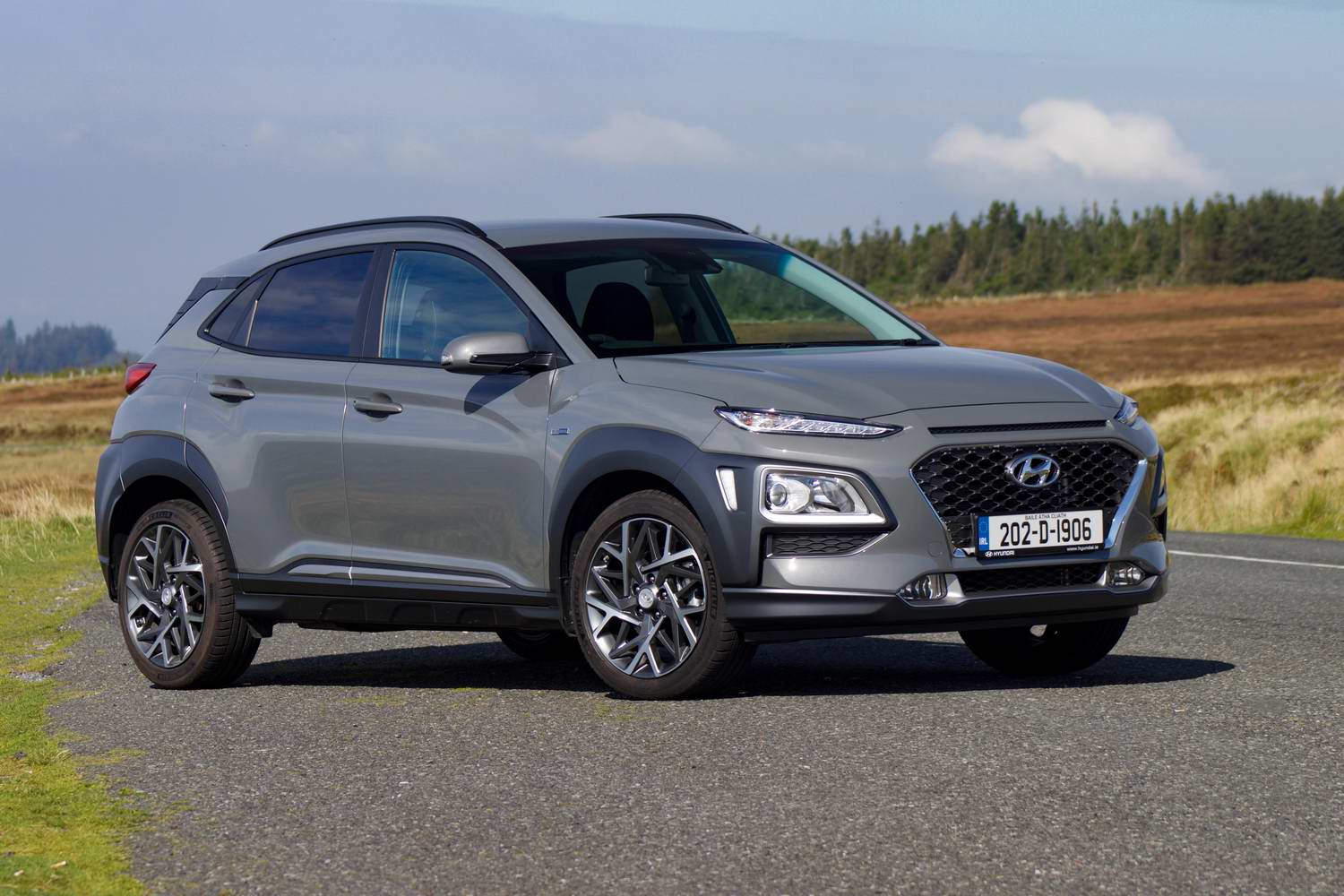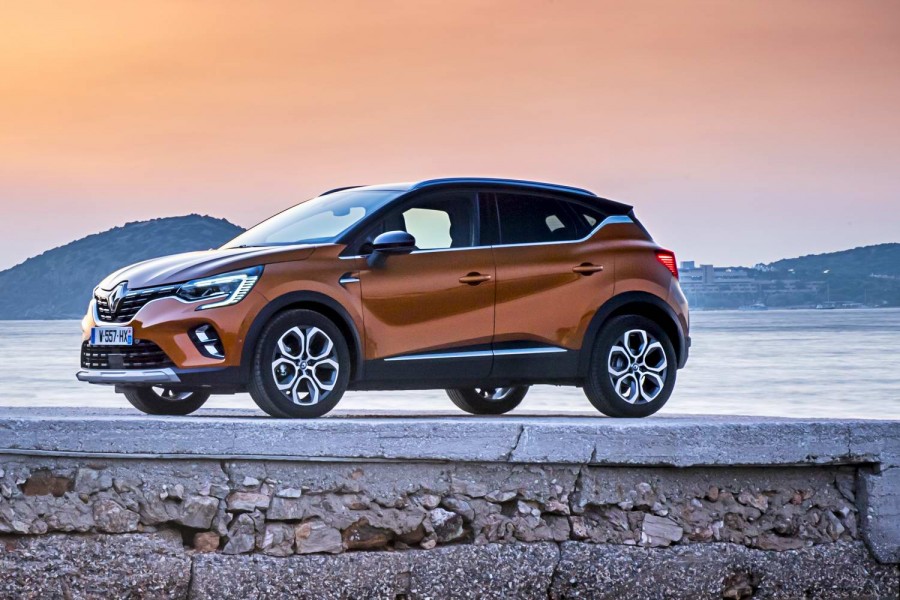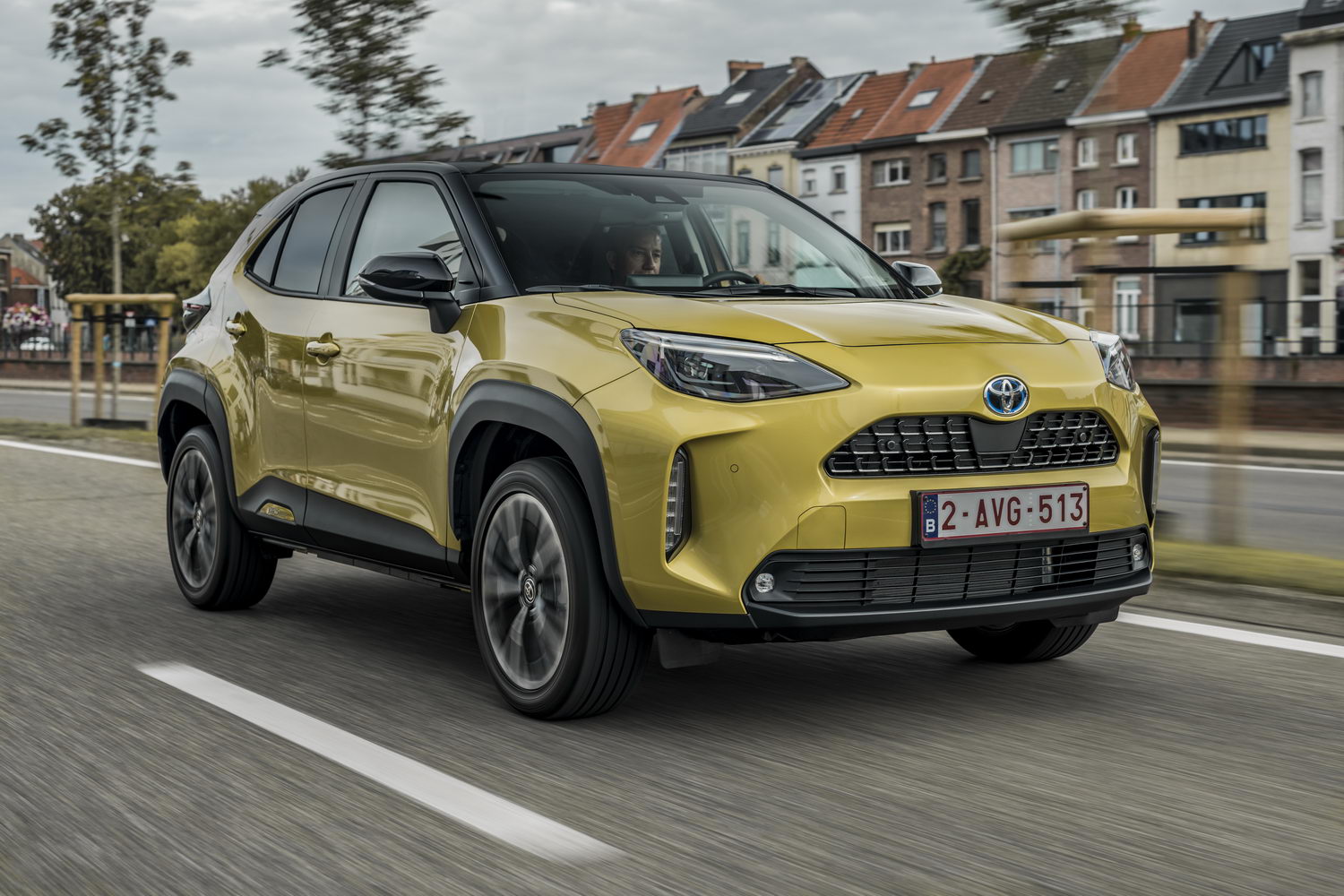When the original Nissan Juke was launched more than a decade ago, the car's styling was nothing if not memorable. But the more understated second-generation model seems to have become something of a forgotten face in the competitive compact SUV market. To bring it back to the forefront of our minds, and to reduce those all-important CO2 emissions ratings, Nissan has fitted the Juke with a hybrid powertrain stolen from the Renault Captur and made some minor external modifications. But in a market saturated with competent rivals, is that enough to make the Juke a key contender?
In the metal
Even those who call themselves Nissan aficionados will have trouble discerning the Juke Hybrid from the standard petrol model. The giveaway is the new grille, which has a glossy black piece of trim missing from the conventional Juke to aid aerodynamics. Other than that, it's more or less the same as the petrol models, bar a few strategically placed 'Hybrid' badges on the back and sides of the car.
That means you get the same basic aesthetic you know and love/hate (delete as applicable). The Juke retains its blunt front end with the massive circular lights and narrow LED strips above them. Further back, it has 'hidden' rear door handles and the slightest hint of a spoiler in the tailgate. Personalisation options, including a contrasting roof colour, are also still a key part of the proposition.
Inside, the Juke Hybrid has changed even less, with much the same funky and surprisingly sporty cockpit as before. Circular air vents dominate, with a touchscreen infotainment system jutting from the upper dash, while the driver gets a combination of digital and analogue displays in the instrument binnacle.
Therein lies the major difference between a petrol Juke and a hybrid version, because the latter does away with the conventional rev counter and displays in a bid to provide more information about what the hybrid system is up to. And those who spot the other major difference will have to look closely, because it's the inclusion of a button marked 'e-pedal' down by the parking brake switch. We'll come onto that later.
For the time being, we'll stick with that cabin, which is quite solid in quite an unconventional way. Some of the plastics feel cheap - particularly the lower dash panels, door cards and glovebox lid - but most of the main touchpoints feel pretty robust. It doesn't feel quite as premium as a Renault Captur, but it still feels strong enough to cope with whatever life will throw at it.
Because the technology is more or less unchanged compared with the petrol-engined Juke, the hybrid still suffers from a slightly low-tech touchscreen, with some old-school graphics and clunky operation. It does the job, but other manufacturers' systems do the same thing with a bit more panache.
Unfortunately, as with the petrol-powered Juke, the hybrid lacks some of the space required for a growing family. The back seats are more than spacious enough for children, but tall adults will feel a bit cramped on a long journey. Not least because the hidden door handles have made the windows smaller, blotting out some of the light. The same goes for the sporty front seats, while Nissan's insistence on fitting dark roof lining to pretty much everything doesn't help reduce the claustrophobia.
Boot space is similarly compromised. Where the conventional Juke provides 422 litres of space - about 40 litres more than you get in a VW Golf - the hybrid cuts that figure to 354 litres. Admittedly, most of that space is lost beneath the false floor, so it only makes a massive difference when you're really cramming things in, and at least it reduces the loading lip. It does make the Juke's boot look a little small compared with those in rivals such as the SEAT Arona and Volkswagen T-Cross, though.
Driving it
Part of the reason for that reduced boot capacity is the new hybrid system, which is essentially the same as that in the Renault Captur. As part of the Renault-Nissan Alliance, the Juke Hybrid gets the same 1.6-litre petrol engine, 1.25kWh battery and 36kW electric motor, as well as the six-speed automatic transmission. There are subtle differences, such as the way in which the Juke's system has been tuned to suit the weight and characteristics of the car, while the Juke battery pack's water-cooling system is missing from the Captur. Otherwise, they're peas in a pod, which means they get the same 143hp power output.
On paper, that's enough for a 0-100km/h time of around 10 seconds, but fuel consumption (or lack of it) is a much more important metric. Officially, the Juke Hybrid will burn around five litres of unleaded every 100km, which makes it about 10 per cent more economical than the petrol-powered Juke with a manual gearbox. Compared with a petrol-powered Juke with an automatic gearbox, it's vastly more economical. It also emits less carbon dioxide, at 114-115g/km.
On the road, however, the differences are less marked. The hybrid system is neither a triumph nor a failure, but more a sort of stalemate between the great and the not so great. Most of the time it's pretty refined, making it difficult to tell whether the electric motor is driving the wheels, or the petrol engine is doing the heavy lifting. There's little in the way of noise and vibration from either motor, and it makes the Juke quite relaxing around town or on a cruise.
However, when you want a bit more get-up-and-go from the engine, it rather lets you down. The performance is hardly scintillating, and the 1.6-litre engine makes quite a racket when you put your foot down. It's an buzzing noise that discourages any sort of sporty driving, and there's no option to take manual control of the complex gearbox to find your own balance. The car makes those decisions for you.
That said, the powertrain does come with an e-pedal mode, which is Nissan's way of saying regenerative braking will help slow the car down to a crawl without the driver touching the brake pedal. It isn't much use in an emergency, although it will help, but with a little forward planning it means you barely need use the brake on any given journey.
And if your foot does venture onto the brake pedal, the car's electronic brain will decide whether the regenerative braking system is sufficient to answer the call, or whether the brake callipers need to be employed. That results in better efficiency - after all, brakes essentially turn forward motion into heat - but it does leave a slightly odd sensation in the brake pedal as the car skips between the two.
Still, the system offers customers a much more efficient way of having an automatic Juke, but that's about your lot. There's no improvement in handling, although the Juke never had any great issues on that front. Hybrid or not, the car lacks feel but offers plenty of grip, which means you can throw it into corners if the mood takes you. Of course, the tall body leans a bit, but not as much as some cars in this class.
Unfortunately, Juke customers are more likely to be interested in ride comfort, and there the Nissan falls short. The ride isn't terrible, but the price you pay for that grip and stability is a firm, unsettled sensation over potholes. Even on the smaller 17-inch alloy wheels, it's hardly a magic carpet.
Summary
The Juke's hybrid powertrain is not a world-beater, but it has its place in the range. There's no avoiding the fact the Juke is not the class-leader it might once have been. The game has moved on since this iteration of the car was launched in 2019, and a selection of strong alternatives have demoted the Nissan to the middle of the pack. While the majority of Juke buyers will be better served by the 1.0-litre manual, the hybrid is the most appealing option for those who want an automatic gearbox.






















